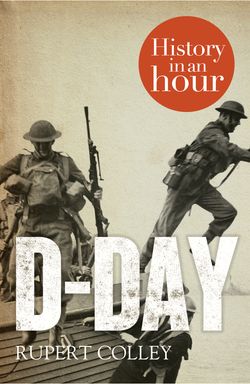Читать книгу D-Day: History in an Hour - Rupert Colley - Страница 12
EISENHOWER
ОглавлениеDwight D. Eisenhower and Air Chief Marshal Sir Arthur Tedder.
With three-quarters of the ground forces being American, it was inevitable that the overall commander of Operation Overlord was, likewise, going to be an American. Sure enough, in December 1943, the command structure for Operation Overlord was decided: the Supreme Commander was to be a Texan, General Dwight D. Eisenhower, with a Scotsman, Air Chief Marshal Sir Arthur Tedder, his deputy. In charge of ground forces, both US and British, was to be General Sir Bernard Montgomery, Britain’s hero of El Alamein. They were to be joined by Admiral Sir Bertram Ramsay and Air Chief Marshal Sir Trafford Leigh-Mallory, commanding the naval (Operation Neptune) and air divisions respectively. (Four years earlier, Ramsay had made his name by overseeing the mass evacuation of 330,000 soldiers stranded at Dunkirk. Both men, Ramsay and Leigh-Mallory, would die in plane accidents before the war’s end.)
The following month, Eisenhower set up his headquarters first in London’s Grosvenor Square, then, from March 1944, in Bushy Park, near Hampton Court. His team, the Supreme Headquarters of the Allied Expeditionary Force (SHAEF), replaced COSSAC as the driving force planning the invasion of occupied Europe. Montgomery expanded Morgan’s three-beach proposal on the Cotentin Peninsula to five, and extended the target area from thirty to fifty miles, with airborne attacks on both the western and eastern flanks. The Americans would land on the two western beaches, codenamed Utah and Omaha, while the British would attack via the middle and eastern beaches, codenamed Gold and Sword, and between these two, the Canadians would land at Juno. The town of Caen, Montgomery decided, needed to be captured within the first twenty-four hours, followed swiftly by Cherbourg. (In the event, it would take Anglo-Canadian forces until 9 July to capture Caen.)
The expansion of Morgan’s original plan entailed greater numbers of landing craft, ships and, vitally, troops; hence, to have more time to prepare, the launch date was pushed back first to 1 June, then, from mid-May, to 5 June 1944. War production went into overdrive in an effort to meet SHAEF’s demands in time.
On Christmas Eve 1943, President Roosevelt broadcast one of his ‘fireside chats’, in which he said, ‘The war is now reaching the stage where we shall all have to look forward to large casualty lists – dead, wounded and missing. War entails just that. There is no easy road to victory. And the end is not yet in sight.’
By the spring of 1944, over 2 million troops had amassed across southern England – thirty-nine divisions, of which twenty divisions were American, fourteen British, three Canadian, one Polish and one French. Among these divisions were troops from Australia, New Zealand, South Africa, Belgium, Norway, the Netherlands, Czechoslovakia, Rhodesia, Denmark and India.
